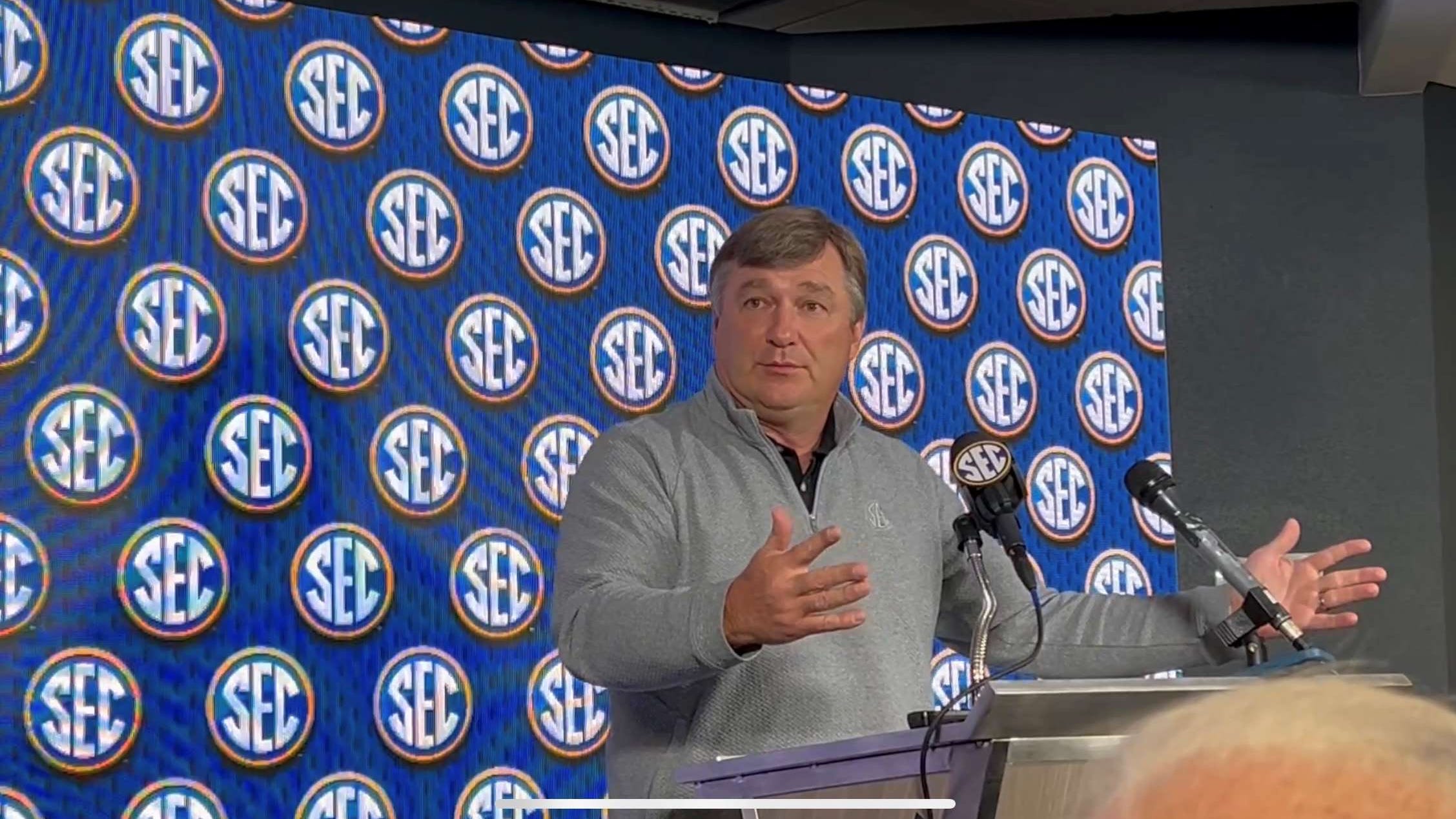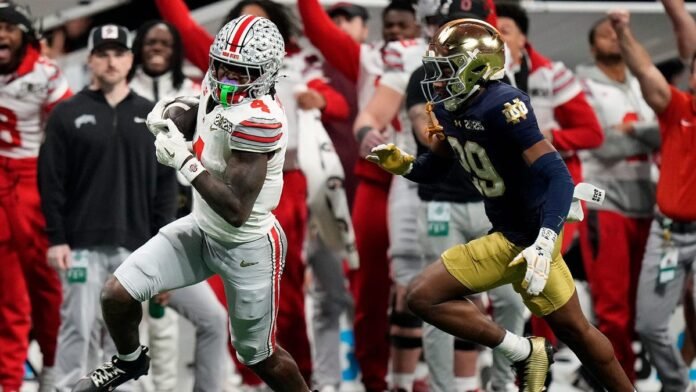When deciding the future format of the College Football Playoff, the NFL cannot serve as a guide. College football needs a selection committee, even if the NFL does not.

Kirby Smart on college football’s future
Kirby Smart urges leaders to prioritize the game’s future over personal or conference agendas in playoff talks.
I hear it often, from countless coaches, and some university and conference administrators, too: If only college football operated more like the NFL, that would fix some so-called problems facing the sport.
They’re looking at this backward.
One of college football’s many beauties is that it doesn’t masquerade as an NFL imitation or Triple-AAA football. Even in this era of paid athletes, college football remains distinct from the NFL. It should steadfastly protect that identity, rather than surrender it amid a foolhardy desire to mimic the pros.
At least one high-ranking conference commissioner, the Big 12’s Brett Yormark, appreciates college football’s need to remain intentionally divergent from the NFL. That’s true, Yormark says, of how college football should operate its postseason.
Conference commissioners are embroiled in an ongoing debate about the future shape and structure of the College Football Playoff. Two models have been socialized most.
In one corner is the Big Ten-backed auto-bid plan that would reduce the selection committee’s role and award 13 of the 16 playoff spots as automatic bids, preassigned to conferences based on historical clout. Big Ten commissioner Tony Petitti drew inspiration from professional leagues while cooking up this playoff plan. Petitti’s quest for play-in games is ripped from Major League Baseball’s old playbook of a play-in round for wild-card teams.
In the other corner is Yormark’s favored 5+11 playoff model that would preserve and expand the selection committee’s role in choosing and seeding the bracket. Five automatic bids would go to conference champions, leaving 11 at-large bids to be picked by the committee. The Big 12 and ACC back this plan, and the SEC has shown interest, too.
BIG PLANS: The billionaire booster who wants to save college sports
TOP 25: Ranking the best college football quarterbacks
The NFL, of course, would never allow a committee to choose its playoff – but that shouldn’t influence how college football models its postseason.
“We do not need a professional model, because we are not the NFL,” Yormark said at Big 12 media days. “We are college football, and we must act like it.”
Yormark nailed it. The NFL assigns playoff bids based off division standings, and wild-card selections go to teams with the best records. No committee is needed, because the NFL is neatly confined to 32 teams, divided evenly into conferences and divisions of equal size. Every team plays each divisional opponent twice during the regular season. The league fosters parity through the NFL draft, a salary cap and collective bargaining.
College football features none of this NFL structure, and it won’t soon feature any of this structure. So, why should its postseason structure draw inspiration from a professional league it doesn’t resemble?
Answer: It shouldn’t.
“There is nothing in sports like college football,” Yormark said, “and we must protect what makes it special and do what’s right for the fans of the game.”
To be clear, the selection committee does not form college football’s lifeblood. A playoff didn’t even exist until 2014. The sport’s backbone is formed by rivalries, pageantry and stadium atmospheres that hit differently than the NFL.
The committee becomes useful, though, in choosing a playoff field. Unlike the NFL’s tidy structure, the FBS features more than 130 programs in conferences of varying sizes competing for one prize. Just consider the Power Four conferences and Notre Dame, and you’re already at 68 teams – more than twice the NFL’s size. Many schools play only half the teams in their own conference during the season. Schedules vary wildly in terms of difficulty.
When we’re left with a 10-2 team from one conference and a 9-3 team from another, the committee helps separate the wheat from the chaff.
We engage in heated debates about whether the committee makes the right selections, just as we do for March Madness. Those debates are an asset to college sports, not a hindrance that requires a playoff with a stacked deck.
Yormark says he’s “doubling down on” his preference for a 5+11 model that would preserve the committee’s role.
“I have a lot of faith in the selection process,” the Big 12 commissioner said. “They are doing a full audit of the selection process to figure out how they can modernize and contemporize and how they use data and how certain metrics.”
Amid that audit of the committee, it’s worth questioning whether a sitting athletic director should chair the group. Anointing an athletic director as the committee’s point-person creates, at the least, the illusion of bias.
But, if the alternative to a selection committee choosing most of the field is the Big Ten’s auto-bid plan that would stack the deck for the two most powerful conferences, before the season starts, then put me down in favor of the committee.
The process is messy. It’s controversial. It’s captivating. It’s subjective. And it’s brilliantly unique and necessary to college sports.
Blake Toppmeyer is the USA TODAY Network’s national college football columnist. Email him at BToppmeyer@gannett.com and follow him on X @btoppmeyer.


























